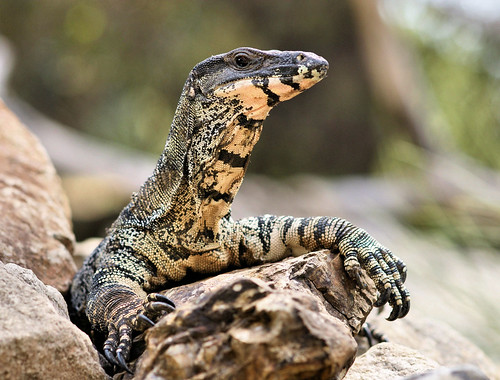Post by elosha11 on Mar 1, 2013 0:20:15 GMT 5
Panthera tigris
Classification:
Kingdom: Animalia
Phylum: Chordata
Class: Mammalia
Order: Carnivora
Family: Felidae
Genus: Panthera
Species: P. tigris

Siberian tiger

Bengal tiger
Existing Subspecies: The Bengal tiger (Panthera tigris tigris)
The Amur or Siberian tiger (Panthera tigris altaica)
The Indo-Chinese tiger (Panthera tigris corbetti)
The South China tiger (Panthera tigris amoyensis)
The Sumatran tiger (Panthera tigris sumatrae)
Extinct Subspecies:
The Javan tiger (Panthera tigris sondaica)
The Caspian tiger (Panthera tigris virgata)
The Balinese tiger (Panthera tigris balica)
Nomenclature:
The species name tigris is Greek for "arrow". It is thought that its name was derived from the straight (as an arrow) and fast-flowing Tigris river that lies between Kurdistan in east central Turkey and the Persian Gulf
• The Bengal tiger (Panthera tigris tigris) has reddish-orange colored fur with dark brown-black vertical stripes. Male Bengal tigers have an average total length of 270 to 310 cm (110 to 120 in) including the tail, while females measure 240 to 265 cm (94 to 104 in) on average. The tail is typically 85 to 110 cm (33 to 43 in) long, and on average, tigers are 90 to 110 cm (35 to 43 in) in height at the shoulders. The average weight of males is 221.2 kg (488 lb), while that of females is 139.7 kg (308 lb). The smallest recorded weights for Bengal tigers are from the Bangladesh Sundarbans, where adult females are 75–80 kg (170–180 lb). Bengal tigers may weigh up to 220 kg (480 lb) and are about 2.9 m (9.5 ft) in length. They inhabit the Indian subcontinent, India, Nepal, Bangledesh and Burma. Bengal tigers will typically prey on animals such as chital, wild pigs, boars, oxen, monkeys and buffalo.
• The Amur tiger (Panthera tigris altaica) is the largest living cat species. Historically they were called Siberian tigers but have since been renamed because they are currently found primarily near the Amur River region of Russia, China and North Korea, not Siberia. Amur tigers have lighter and fewer stripes than other tiger subspecies. They have long and thick hair to help them stay warm in their cold climate. They inhabit the Amur-Ussuri region of Primorsky Krai and Khabarovsk Krai in far eastern Siberia. It ranks among the biggest felids that have ever existed with a head and body length of 160–180 cm (63–71 in) for females and 190–230 cm (75–91 in) for males, plus a tail of about 60–110 cm (24–43 in) and an average weight of around 227 kg (500 lb) for males. Siberian tigers have thick coats and a paler golden hue and fewer stripes. The heaviest wild Siberian tiger weighed 384 kg (850 lb) but according to Czech biologist Vratislav Mazák, this record is not reliable. In 2005, there were 331–393 adult-subadult Siberian tigers in the region, with a breeding adult population of about 250 individuals. The population has been stable for more than a decade, but partial surveys conducted after 2005 indicate that the Russian tiger population is declining. At the turn of the century, the phylogenetic relationships of tiger subspecies was re-assessed, and a remarkable similarity between the Siberian and Caspian tiger observed indicating that the Siberian tiger population is the genetically closest living relative of the extinct Caspian tiger, and strongly implying a very recent common ancestry for the two groups. Amur tigers will prey on sambar, siberian roe deer and sika deer, wild boar, Manchurian wapiti, musk deer, goral and smaller prey like hares, rabbits, pikas and salmon. They are also known to prey on brown and black bears, especially when ungulate populations are diminished. The record is mixed as to their success in attacking such large carnivores, with both species showing some level of success in such interspecific predatory encounters.
• The Indo-Chinese tiger (Panthera tigris corbetti) is one of the smallest tiger subspecies, weighing up to 182 kg (400 lb) and is about 2.8 m (9ft) in length. They have a large range encompassing continental southeast Asia region (southern China, Laos, Vietnam, Cambodia, Malaysia, Thailand and eastern Burma).
• The South China tiger (Panthera tigris amoyensis) are native to South Central China. They may weigh up to 150 kg (330 lb) and are about 2.5 m (8 ft) in length. South China tigers are the most critically endangered of all tiger subspecies with a population estimate between 30 to 80 individuals.
• The Sumatran tiger (Panthera tigris sumatrae) is the smallest living tiger subspecies, weighing up to 120 kg (265 lb) and is about 2.4 m (8 ft) in length. They are found in Sumatra, part of Indonesia. The Sumatran tiger's fur is darker in coloration than other tiger species with a deep orange to reddish coat and black stripes.
Classification:
Kingdom: Animalia
Phylum: Chordata
Class: Mammalia
Order: Carnivora
Family: Felidae
Genus: Panthera
Species: P. tigris

Siberian tiger

Bengal tiger
Existing Subspecies: The Bengal tiger (Panthera tigris tigris)
The Amur or Siberian tiger (Panthera tigris altaica)
The Indo-Chinese tiger (Panthera tigris corbetti)
The South China tiger (Panthera tigris amoyensis)
The Sumatran tiger (Panthera tigris sumatrae)
Extinct Subspecies:
The Javan tiger (Panthera tigris sondaica)
The Caspian tiger (Panthera tigris virgata)
The Balinese tiger (Panthera tigris balica)
Nomenclature:
The species name tigris is Greek for "arrow". It is thought that its name was derived from the straight (as an arrow) and fast-flowing Tigris river that lies between Kurdistan in east central Turkey and the Persian Gulf
• The Bengal tiger (Panthera tigris tigris) has reddish-orange colored fur with dark brown-black vertical stripes. Male Bengal tigers have an average total length of 270 to 310 cm (110 to 120 in) including the tail, while females measure 240 to 265 cm (94 to 104 in) on average. The tail is typically 85 to 110 cm (33 to 43 in) long, and on average, tigers are 90 to 110 cm (35 to 43 in) in height at the shoulders. The average weight of males is 221.2 kg (488 lb), while that of females is 139.7 kg (308 lb). The smallest recorded weights for Bengal tigers are from the Bangladesh Sundarbans, where adult females are 75–80 kg (170–180 lb). Bengal tigers may weigh up to 220 kg (480 lb) and are about 2.9 m (9.5 ft) in length. They inhabit the Indian subcontinent, India, Nepal, Bangledesh and Burma. Bengal tigers will typically prey on animals such as chital, wild pigs, boars, oxen, monkeys and buffalo.
• The Amur tiger (Panthera tigris altaica) is the largest living cat species. Historically they were called Siberian tigers but have since been renamed because they are currently found primarily near the Amur River region of Russia, China and North Korea, not Siberia. Amur tigers have lighter and fewer stripes than other tiger subspecies. They have long and thick hair to help them stay warm in their cold climate. They inhabit the Amur-Ussuri region of Primorsky Krai and Khabarovsk Krai in far eastern Siberia. It ranks among the biggest felids that have ever existed with a head and body length of 160–180 cm (63–71 in) for females and 190–230 cm (75–91 in) for males, plus a tail of about 60–110 cm (24–43 in) and an average weight of around 227 kg (500 lb) for males. Siberian tigers have thick coats and a paler golden hue and fewer stripes. The heaviest wild Siberian tiger weighed 384 kg (850 lb) but according to Czech biologist Vratislav Mazák, this record is not reliable. In 2005, there were 331–393 adult-subadult Siberian tigers in the region, with a breeding adult population of about 250 individuals. The population has been stable for more than a decade, but partial surveys conducted after 2005 indicate that the Russian tiger population is declining. At the turn of the century, the phylogenetic relationships of tiger subspecies was re-assessed, and a remarkable similarity between the Siberian and Caspian tiger observed indicating that the Siberian tiger population is the genetically closest living relative of the extinct Caspian tiger, and strongly implying a very recent common ancestry for the two groups. Amur tigers will prey on sambar, siberian roe deer and sika deer, wild boar, Manchurian wapiti, musk deer, goral and smaller prey like hares, rabbits, pikas and salmon. They are also known to prey on brown and black bears, especially when ungulate populations are diminished. The record is mixed as to their success in attacking such large carnivores, with both species showing some level of success in such interspecific predatory encounters.
• The Indo-Chinese tiger (Panthera tigris corbetti) is one of the smallest tiger subspecies, weighing up to 182 kg (400 lb) and is about 2.8 m (9ft) in length. They have a large range encompassing continental southeast Asia region (southern China, Laos, Vietnam, Cambodia, Malaysia, Thailand and eastern Burma).
• The South China tiger (Panthera tigris amoyensis) are native to South Central China. They may weigh up to 150 kg (330 lb) and are about 2.5 m (8 ft) in length. South China tigers are the most critically endangered of all tiger subspecies with a population estimate between 30 to 80 individuals.
• The Sumatran tiger (Panthera tigris sumatrae) is the smallest living tiger subspecies, weighing up to 120 kg (265 lb) and is about 2.4 m (8 ft) in length. They are found in Sumatra, part of Indonesia. The Sumatran tiger's fur is darker in coloration than other tiger species with a deep orange to reddish coat and black stripes.






 ?4%) of kills where they occur (Table 2). Red deer, banteng and wild boar were the next most important prey in those locations where they occurred (Table 2). Chital and red deer were the most abundant prey where they occurred (Table 2).
?4%) of kills where they occur (Table 2). Red deer, banteng and wild boar were the next most important prey in those locations where they occurred (Table 2). Chital and red deer were the most abundant prey where they occurred (Table 2).
















 .
.





